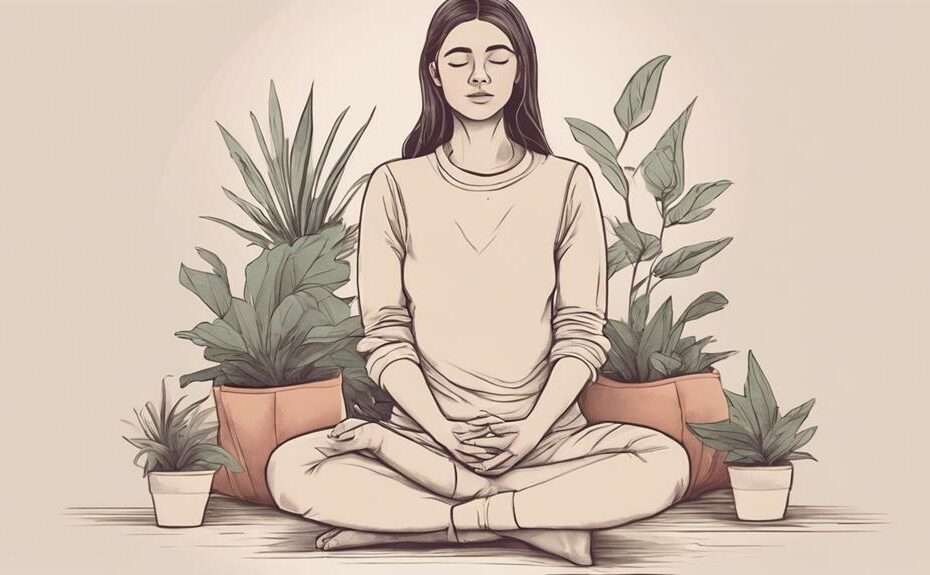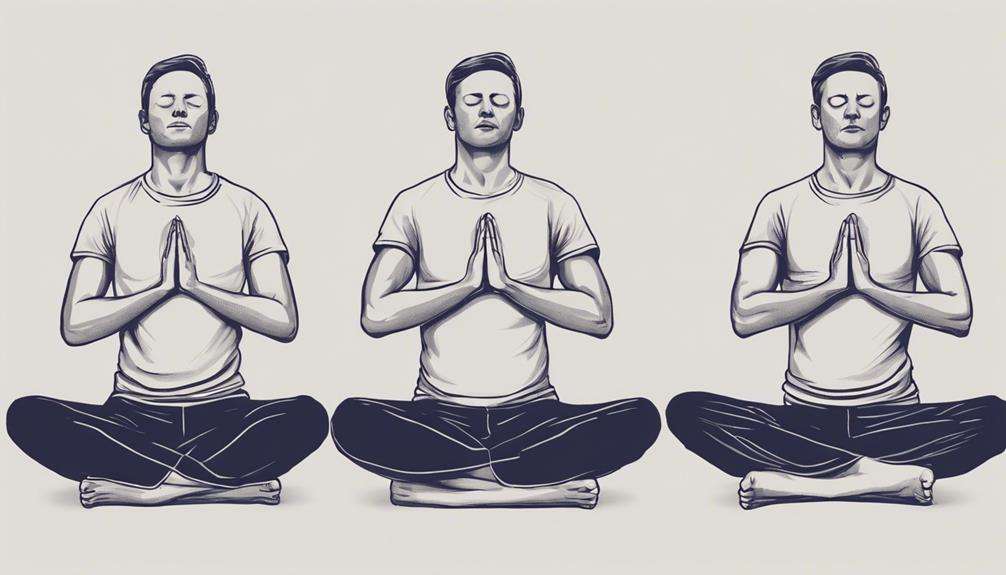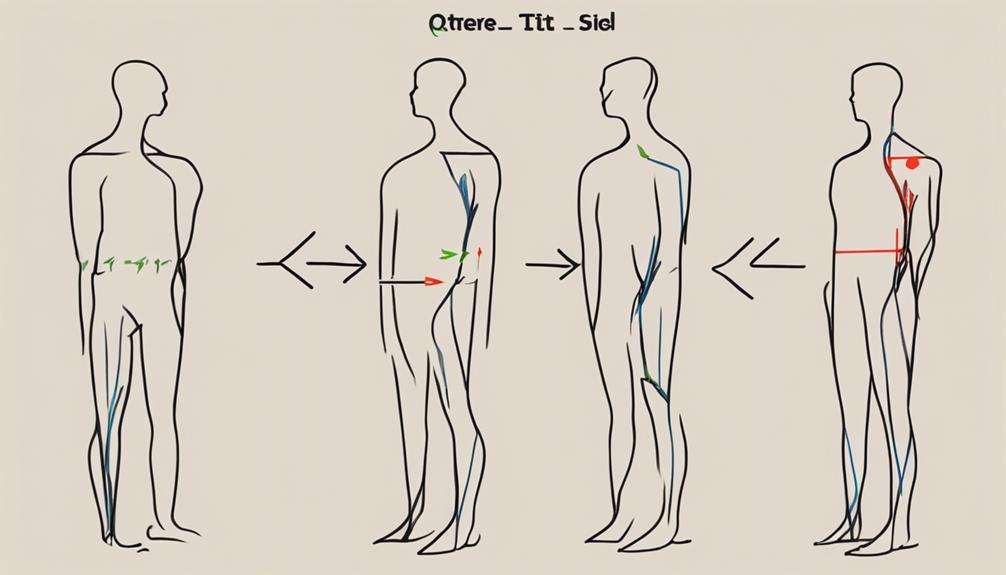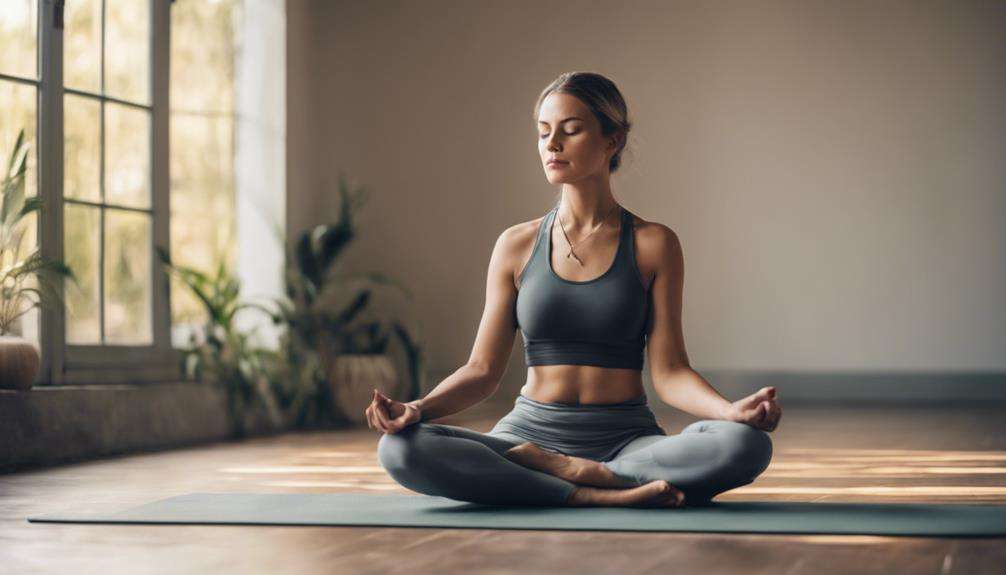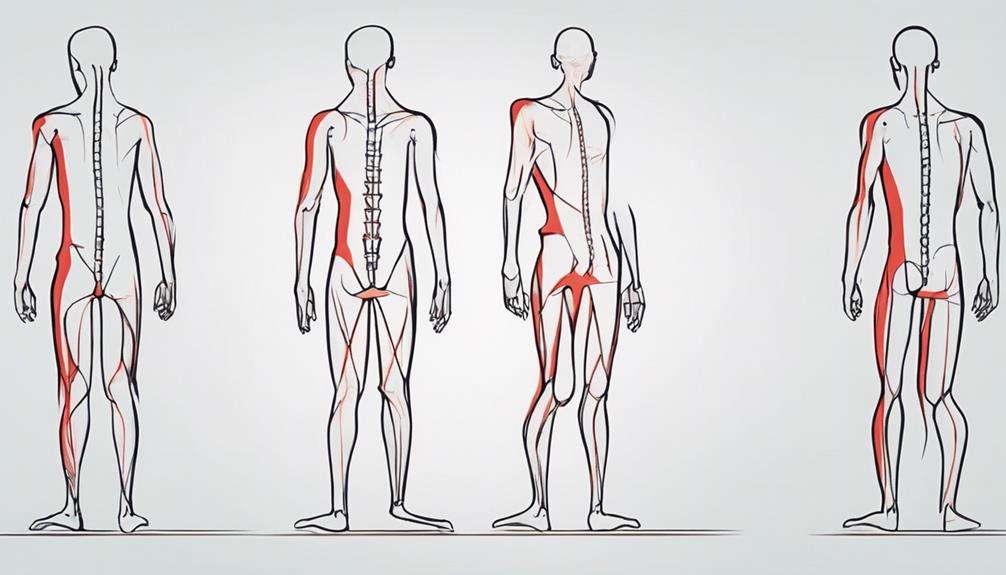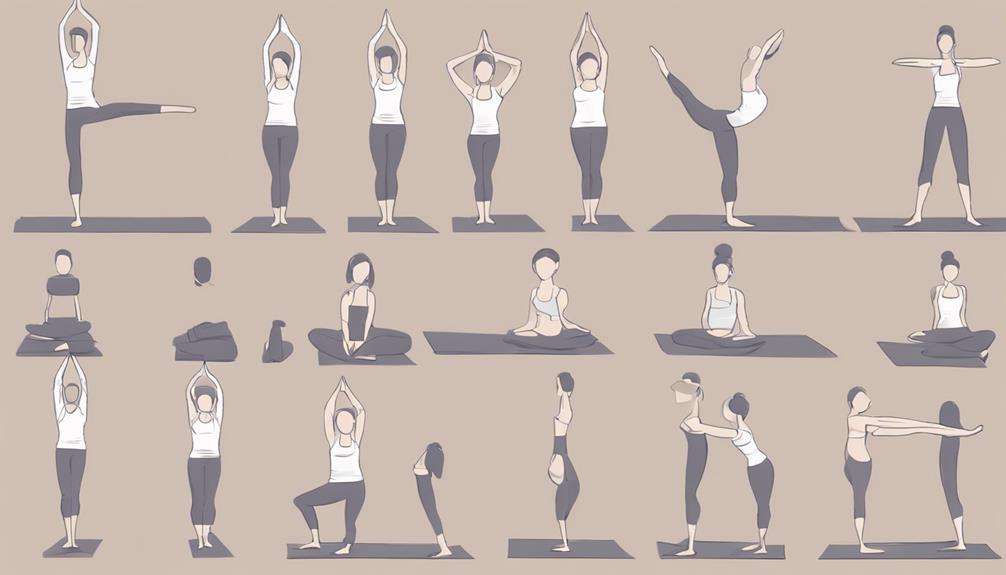You might think achieving proper sitting posture for mindfulness practices is challenging, but with these 5 effective techniques, you can enhance your experience effortlessly.
By mastering the art of mindful breathing, you can lay a solid foundation for improved posture and concentration.
Each technique offers a unique approach to support your body and mind, guiding you towards a more profound state of mindfulness.
Key Takeaways
- Focus on breath and body awareness for posture improvement
- Visualize roots into the earth and a steady mountain for stability
- Engage in gentle movements to relieve tension and enhance alignment
- Check and adjust sitting position for comfort and proper alignment
Mindful Breathing for Posture
Improving your posture through mindful breathing involves focusing on your breath to increase body awareness and support a straight spine. Mindful breathing, also known as diaphragmatic breathing, plays a vital role in promoting proper posture by helping you relax muscles and align your body correctly. By incorporating mindful breathing into your daily activities, you can cultivate mindfulness, reduce stress, and improve your posture gradually.
When you practice mindful breathing, you bring your attention to the present moment, allowing you to become more aware of your body's position and alignment. This heightened body awareness can help you identify areas of tension or poor posture habits that you may need to address. By consciously engaging in diaphragmatic breathing, you not only promote relaxation but also strengthen the muscles that support a straight spine.
Through the intentional practice of mindful breathing, you can create a positive impact on your posture, overall well-being, and stress levels. By incorporating this technique into your daily routine, you can work towards achieving a more upright and aligned posture while experiencing the benefits of relaxation and mindfulness.
Body Scan for Alignment
Conduct a thorough body scan during meditation to systematically assess alignment and tension from head to toe, enhancing posture awareness and relaxation. Begin by focusing on the head, checking for any discomfort or misalignment.
Move down through the neck, shoulders, spine, and pelvis, paying attention to posture and releasing tension where needed. Continue scanning the arms, hands, legs, and feet, ensuring each part is properly aligned and free of tension.
This technique not only helps correct posture but also promotes relaxation during meditation. By bringing awareness to your body through a body scan, you can improve your sitting posture and enhance your overall meditation experience.
Regular practice of body scan for alignment leads to greater mindfulness, improved body awareness, and better posture maintenance throughout the day. Embrace this practice to cultivate a deeper connection between your mind and body, fostering improved well-being and mindfulness.
Grounding Visualization for Stability
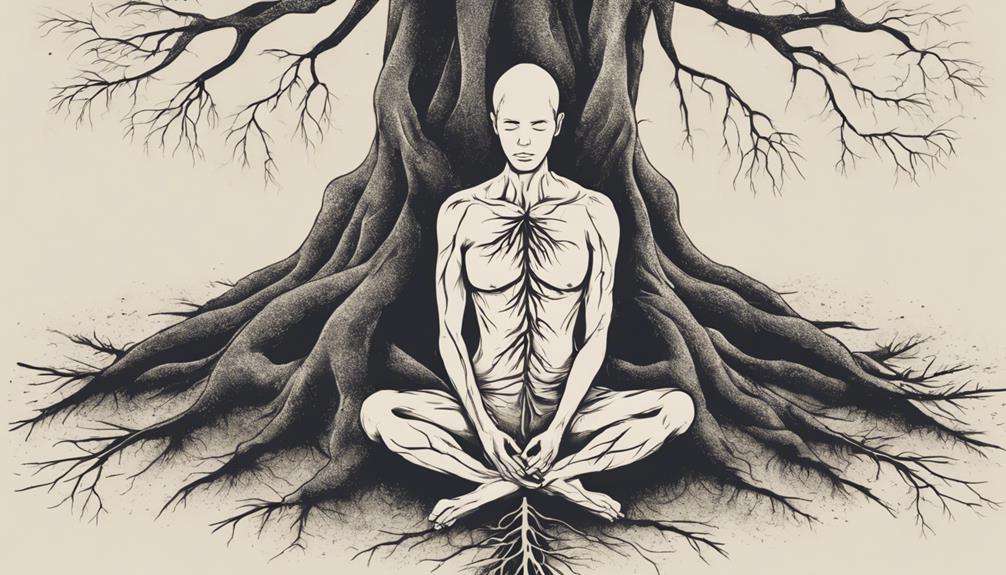
Scan your surroundings and begin by visualizing roots growing from your feet into the earth, anchoring you in stability and support. Picture these roots extending deep into the ground, like a strong tree trunk connected to your spine, providing a solid foundation for your posture.
Envision a grounding cord made of light running from your body to the center of the earth, creating a sense of security and centering you in the present moment.
Surround yourself with a protective energy bubble, shielding you from external distractions and allowing you to focus on your posture. Imagine a steady mountain within you, representing strength, resilience, and unwavering stability in your sitting position.
Posture Awareness Through Gentle Movements
To enhance your mindfulness practice and improve your sitting posture, incorporating gentle movements can be an essential technique. Gentle movements play a vital role in increasing awareness of your posture during meditation.
By engaging in mindful movements such as shoulder rolls, neck stretches, and hip rotations, you can relieve tension and enhance your body's alignment. These movements offer a unique opportunity to focus on how your body feels, guiding you to make necessary adjustments for a better sitting posture.
Regular practice of gentle movements can lead to a more comfortable and aligned sitting position, ultimately improving your overall mindfulness experience. Being mindful of your body through these movements not only boosts your posture awareness but also helps you achieve a state of relaxation and centeredness during your meditation sessions.
Embrace these gentle movements as part of your mindfulness practice to cultivate better posture and body awareness.
Mindful Sitting Adjustments for Comfort

For best comfort and alignment during your mindfulness practice, make mindful adjustments to your sitting posture. Start by ensuring your hips are slightly higher than your knees in your seated position by adjusting the height of your chair or cushion.
Keep your feet flat on the floor or utilize a footrest for added support to maintain stability. Relax your shoulders and elongate your spine, sitting up straight to enhance breathing and circulation. Place your hands gently on your thighs or in your lap to promote relaxation and focus during meditation.
Experiment with different sitting positions and props to find the most comfortable position that works best for your body and enhances your mindfulness practice. By maintaining proper alignment, with shoulders relaxed, spine straight, and feet grounded, you can optimize your breathing and circulation, leading to a more effective and enjoyable meditation experience.
Frequently Asked Questions
What Is the Sitting Position for Mindfulness?
Sit comfortably with mindful alignment, relaxing tension. Ground feet, support back, open chest, lengthen spine. Engage core, soften shoulders, balance weight. This posture fosters better breathing and body awareness during mindfulness practice.
What Is the Correct Posture for Mindfulness?
To maximize mindfulness benefits, prioritize correct alignment and posture. Enhance mind-body connection with a straight spine, relaxed shoulders, and comfortable hand placement. Use chair options, breathing techniques, and relaxation methods for mindful awareness. Optimize comfort and flexibility for deeper practice.
Is There a Proper Way to Sit While Meditating?
For meditation, select between sitting in a chair or on a cushion. Cross-legged or kneeling, maintain your spine straight with back support. Make sure legs are comfortable, feet grounded. Arms relaxed, head aligned, focus on breath, and connect mind and body for mindfulness.
How Can I Improve My Sitting Meditation?
To improve your sitting meditation, focus on incorporating breathing exercises, body awareness, mindful movements, visualizing success, grounding techniques, relaxation techniques, posture alignment, mindful stretching, focus training, and stability exercises. These practices will enhance your overall meditation experience.
Conclusion
To sum up, incorporating these mindfulness techniques for proper sitting posture can greatly enhance your meditation practice. Remember, Rome wasn't built in a day, so be patient with yourself as you work towards improving your posture.
With consistent practice and dedication, you'll soon find yourself sitting like a rock, grounded and steady in your mindfulness journey.
So, keep calm and sit mindfully!
